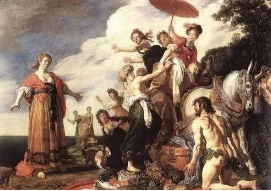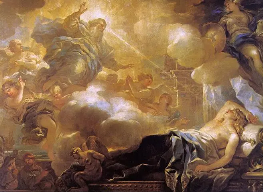Ten seminal novels of the twentieth century
8 min read
1. Ulysses Joyce Not 10 out of 100 people can read Ulysses, and five out of 10 who can read Ulysses read him as a masterpiece of art.””Ulysses is the greatest contribution of fiction to 20th-century literature. It will immortalize its author, just as Rabelais and The Brothers Karamazov immortalized Dostoyevsky.”This is the 1922 New York Times Book Review writer’s contract. Collins’ two judgments about Ulysses in the same review. By the end of the 20th century, these two very different predictions were “mercifully true” and may the reviewer be remembered for them.
Even Western literature professors have nothing to say about Ulysses, let alone others.
It should be added that it is thanks to the hard work of the translators that Ulysses is finally available to the Chinese people. Jin Di).
In expressing our deep gratitude to them, we can say that although the strangeness and delicacy of Ulysses in its original text is not yet accessible to most Chinese, at least in its Chinese translation, we feel the possibility of the beauty of modern Chinese.
In Search of Lost Time by Proust.
When the third book of In Search of Lost Time, The House of Gellmount, was published in France, the famous literary critic and poet Ezra. Pound said the perfect critique of the book would be a single paragraph, seven pages long and using only semicolons. This is to exaggerate Proust’s excruciating sentence. But by the time Proust died in 1922, his 15-volume novel, written with unimaginable pain, had already been acknowledged for the millionth time as one of the longest and greatest novels ever written. Marcel Proust is like a great architect. He spent thirty years building a glorious corridor of time with bricks and stones of memory, and at the beginning of writing, he considered building this work like a church. This gives his work a brilliance that transcends all details — an overall momentum and power.
3. Metamorphosis by Kafka.
An ordinary little civil servant wakes up one morning transformed into a beetle, followed by a series of bizarre and “normal” reactions: family members ranging from shock and horror to indifference and disgust; The hero’s own desperate and miserable effort to survive — all like a dream, a nightmare! But in Kafka’s world, the nightmare never wakes up… Kafka’s talent as a novelist lies in describing “all the activities of human life and its vivid details” in the absurd and illogical world. For Kafka himself, survival was a struggle for “the proper use of our power, which is always limited”. Through the form of writing, Kafka found the image of existence for his struggle. When we read the Metamorphosis, The Castle, The Trial and other works, it is almost like facing a powerful sculpture, you can feel the throbbing and conflict of life from the extreme deformation and exaggeration. Through Kafka’s own letters and diaries, we will be able to access the endless source of power, surprisingly, with such gestures: sadness, understanding, pain, humility… There is much more we can say about Kafka (it is said that in the study of modern literature, Kafka’s papers are so numerous that it takes dozens of pages just to print the title), but it seems to me that the most appropriate way is to listen quietly (isn’t that one of the most lacking abilities of our time).
Camus, The Outsider.
The novelist Camus also has another identity, that is, as one of the representatives of existentialism, the philosopher Camus. In a sense, the confusion of these two identities tends to bring about such a problem in the creation of novels, that is, the thought is greater than the image. This problem is more obvious in the case of Sartre, a fellow representative of existentialism: To put it bluntly, Sartre, as a first-class philosopher, is at best a second-rate figure in fiction. On the other hand, the evaluation of this kind of novel often focuses on its ideological nature. In plain English, it is Camus’s novels, whether “The Outsider” or “The Plague,” whose success or failure depends on their central idea. “The central idea is not the highest form of creative art, but it may be so important that to abandon it for the sake of art criticism would be to desecrate the human spirit.” (New York Times Book Review) Stylistically, it has been noted that “Camus excelled at Defoe’s narrative style.” If that is not enough to keep you reading, his characteristic sensitivity and exuberance make up much of the space in the narrative. It will not be forgotten that The Myth of Sisyphus, though a work of philosophy, is unquestionably a masterpiece of beautiful and passionate prose.
5. Lolita by Nabokov.
Before Lolita was published, Nabokov’s resume as a literature professor looked like this: male (1903 –), Russian aristocrat in exile (revolutionary?). Descendents, travelers, lepidopterists (especially butterflies) and taxidermy collectors, poets, university professors of liberal arts (classics, writing, and literary criticism), makers of chess puzzles. If you have to judge it in one word, it comes closest: elegance. But with the publication of Lolita, everything changed. In the minds of millions of American readers, the “brand” Nabokov represented: the best-selling author, the “pervert,” the blasphemer, the showman, the nouveau rich (royalties from “Lolita”), in a nutshell: To put it simply, Lolita is about an adult’s sexual desires and “erotic story” of a teenage girl. Nabokov’s mastery of American colloquial language and slang (this is his first novel in English, after all his previous works in his native Russian), as well as the development of “revelry” folk storytelling techniques from Rabelais on, is remarkable. Without an understanding of Nabokov’s contribution to the linguistic style and narrative structure, it is difficult to understand how important he will remain in literary history. Refer to another of his “elegant” books: his autobiography, “Say, Memory”.
6. The Garden of Intersecting Paths by Borges.
“The Argentine writer Jorge Luis Borges is related to China, so the number of people who know him in China probably exceeds the population of his home country. But the premature baby, born on August 24, 1899, had never been to China, despite the feeling that he had ‘always been there’. This is because, in his mind, China is a byword for distance and mystery, and is the source of books.” This is a famous foreign literature expert and translator Chen Zhongyi wrote in a commemorative article on the eve of the centennial birthday of Borges. Indeed, Borges’ influence as a poet and novelist extended far beyond his native Argentina. There are people who seem to be born out of any particular time or place — Borges was one of them. For him, the time and space that everyone is familiar with exist in another way. In all his works, this existence is repeatedly expressed by several metaphorical images: the book, the mirror, the maze, the dream. They continue to reproduce, to reproduce, to infinity.
One Hundred Years of Solitude by Marquez.
For most literary lovers, One Hundred Years of Solitude and Garcia. Mr Marquez has become almost synonymous with Latin American “magical realism”. It may be comforting to the writers who pioneered and developed the genre with Marquez that “the sower does not pick the biggest fruit.” However, there is no reason why this novel, known as “the most representative magic realism novel”, became popular all the way until it was invited into the pantheon of Nobel Literature Prize. On the one hand, magic realism has its own unique creation principles and ideological connotation, while the “easy reading” of the novel itself is the reason why more readers choose it. “It gives pleasure in the direct way that its meaning is revealed through a carefully crafted screwy plot, ancient mysteries, dark family secrets, and unique internal contradictions.” (The New York Times Book Review) “Pleasure,” mind you, “in such a direct way.” This is to say one thing at least: there is no correlation between “great books” and “hard to read” — and not just for readers, but even for our writers, which is kind advice.
8. Heart of Darkness by Conrad.
Perhaps Chinese readers don’t know much about Conrad. But in 1998, the British “Blue Print House” selected one of the 100 English novels of the century, “nautical writer Conrad” was one of four. More than the number one Joyce and Chinese readers familiar with Faulkner, Foster and others. Even for readers who never knew who Conrad was, reading his novels can be a “pleasant journey”. From the external experience, the “loud call of the sea” in Conrad’s novel immediately makes us set sail with the author to experience that kind of “great adventure”. Let us know the “great and monotonous existence between the sky and the sea”; Feel the mundane passing of life. In his heart, Conrad is also known as the first Western novelist who “focuses on the study of psychological phenomena”. His delicate grasp and anatomy of human emotions remind us of Zweig, while his deep exploration of human nature reminds us of Dostoyevsky. Conrad may not be among the “greatest” in terms of the importance of literary history, but he is certainly among the best writers.
9. The Sound and the Fury by Faulkner.
“I found a stamp-sized piece of land in my hometown worth writing about, and I could not write enough about the people and things there if I wrote all my life.” (Faulkner’s own statement) As a recognized master of American literature, Faulkner’s greatest contribution is greater than leaving a fictional, mythic literary region for mankind — Yoknapatawfa County in northern Mississippi. The county covers 2,400 miles and has a population of more than 15,000. The center of the county is the town of Jefferson. Faulkner has twice mapped the fictional county and proudly calls himself its “sole master and owner.” “The Sound and the Fury” is one of the masterpieces of this vast “Yoknapatawfa” lineage, which consists of more than a dozen novels and nearly 80 short stories. The theme can be summarized as an “elegy” for the southern plantation system. In the way of writing, The Sound and the Fury plays the stream of consciousness technique incisively and vividly, becoming a classic work of modern literature. The title comes from a monologue in Shakespeare’s Macbeth, “Life is but a walking shadow, a player who plays the stage, appears for a moment, and then recedes without a sound; It’s a story told by an idiot, full of sound and fury, but without any meaning.” This makes for a wonderful commentary on the novel.
10. Snow Country · Kawabata Yasunari.
In 1968, Kawabata won the Nobel Prize for his “perceptive, narrative skills that express the essence of the Japanese heart.” For many readers, Kawabata Yasunari has almost become the embodiment of “traditional” Japanese literature. Kawabata Yasunari’s Japan has also become a symbol of “distant, mysterious and solitary existence” in the eyes of Western literature researchers. In fact, Kawabata Yasunari was obsessed with simply borrowing Western literature when he first entered the literary world. He even declared that “Expressionism can be called our father and Dada can be called our mother”. After being frustrated on the road of European creation, he declared that he would change to “orientalism” and went to the other extreme of completely inheriting the tradition. Finally, he found a bridge of integration and communication between Eastern and Western literature from the failure, thus creating his own “Oriental beauty”. Kawabata literature is evaluated as “reflecting the empty psychology, delicate feelings and melancholy life with morbid, poetic, lonely, aging and death on the basis of illusory, sad and decadent tone, pursuing a decadent supreme beauty and achieving an ethereal and nothingness of art.” (Kawabata Yasunari Collection introduction), “Snow Country” is one of his representative works.






